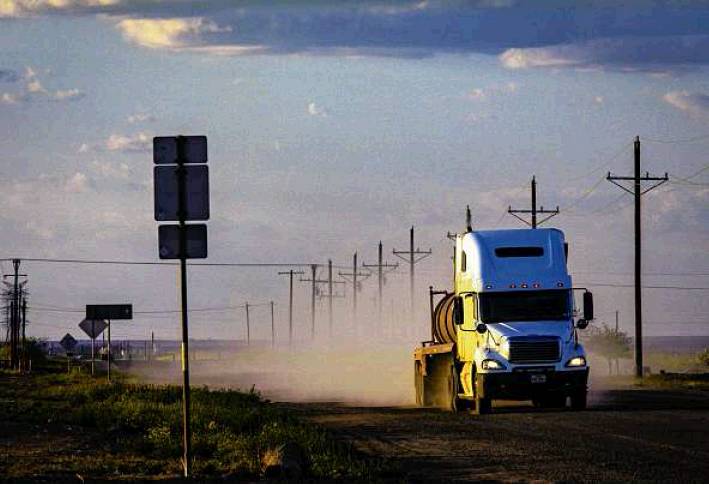IN SIGHT
The cost of dealing with Permian earthquakes
By Paul Takahashi STAFF WRITER
Permian oil producers are facing hundreds of millions of dollars in additional costs to address the growing problem of earthquakes in the nation’s most productive oil field.
Shale companies operating in earthquake-prone areas of West Texas could pay at least $207 million more to transport large volumes of saltwater produced from oil wells to distant disposal sites as state regulators crack down on deep water injection. If all the disposal wells in earthquake-prone areas are curtailed or shut down by regulators, the increase in disposal costs could climb to $763 million, according to an analysis by Sourcenergy, a Houston-based energy data firm.
“You’re going to see much bigger cost impacts, especially for Delaware basin operators,” Sourcenergy CEO Josh Adler said. “There’s a lot more water and there’s a lot less infrastructure.”
The Delaware Basin is the western lobe of the Permian Basin in West Texas.
The cost of producing oil in Texas is rising as shale companies face the expense of transporting large volumes of saltwater by truck or building new water pipelines to disposal wells beyond earthquake-prone areas. At best, these rising costs and logistical challenges of finding new disposal sites are a minor inconvenience. At worst, companies unable to dispose of their saltwater could curtail tens of thousands of barrels of daily crude production, hitting bottom lines.
The cost of inaction, however, is even higher. Oil companies already face mounting criticism from the public over greenhouse gas emissions, oil spills and abandoned wells. Earthquakes – which have immediate impact on public safety – only adds to the pressure on one of the largest industries in Texas.
Seismologists attribute the increasing frequency and intensity of West Texas earthquakes to the oil industry’s routine practice of injecting saltwater — a byproduct of oil production — into deep disposal wells. For each of the roughly 4 million barrels of crude pumped daily from the ground in West Texas, at least four barrels of extremely salty water are produced.
A decade of saltwater injections into disposal wells 10,000 feet deep has intensified pressure and caused movement along ancient fault lines.
The number of earthquakes stronger than a 3 on the Richter scale – enough to crack walls and foundations – increased 88-fold over the past three years to 176 last year, up from two in 2018, according to data from the University of Texas at Austin’s Tex-Net Seismic Monitoring and analyzed by Sourcenergy.
The Texas Railroad Commission, the state’s oil and gas regulator, has taken action to limit the amount of saltwater that can be injected into disposal wells to curb what it called an “unprecedented” increase in earthquakes.
In September and October, the commission mandated that oil producers in two “seismic response areas” in the Permian Basin cut by half the amount of saltwater they put into disposal wells, and imposed a one-year moratorium on new permits that would allow producers to inject saltwater into disposal wells in these areas.
Last month, the commission ordered the suspension of deep saltwater injections in a particularly seismic area of the Midland basin, pulling permits for 33 disposal wells indefinitely. This action stripped 14 companies, including Houston-based ConocoPhillips and Midland-based Rattler Midstream, owned by Diamondback Energy, of the ability to dispose of nearly 1 million barrels of saltwater.
After 4.2- and 4.6-magnitude earthquakes rocked the Midland area last month, the Railroad Commission said it would impose more restrictions on oil companies injecting saltwater into deep disposal wells in the area. Sourcenergy estimates some 250,000 barrels per day of Texas oil production worth about $7 billion could be at risk of disruption from saltwater disposal restrictions.
Until more water pipelines are built, oil companies affected by saltwater restrictions will have to rely on water trucks to transport saltwater away from earthquake-prone areas, a prospect complicated by a national shortage of truck drivers and oil company pledges to reduce their carbon footprint. The cost to dispose of saltwater by trucks can be as high as 10 times that of pipelines.
“There’s going to be a lot of trucking (of saltwater), and it’s going to be really expensive,” Adler said. paul.takahashi@chron.com twitter.com/paultakahashi

